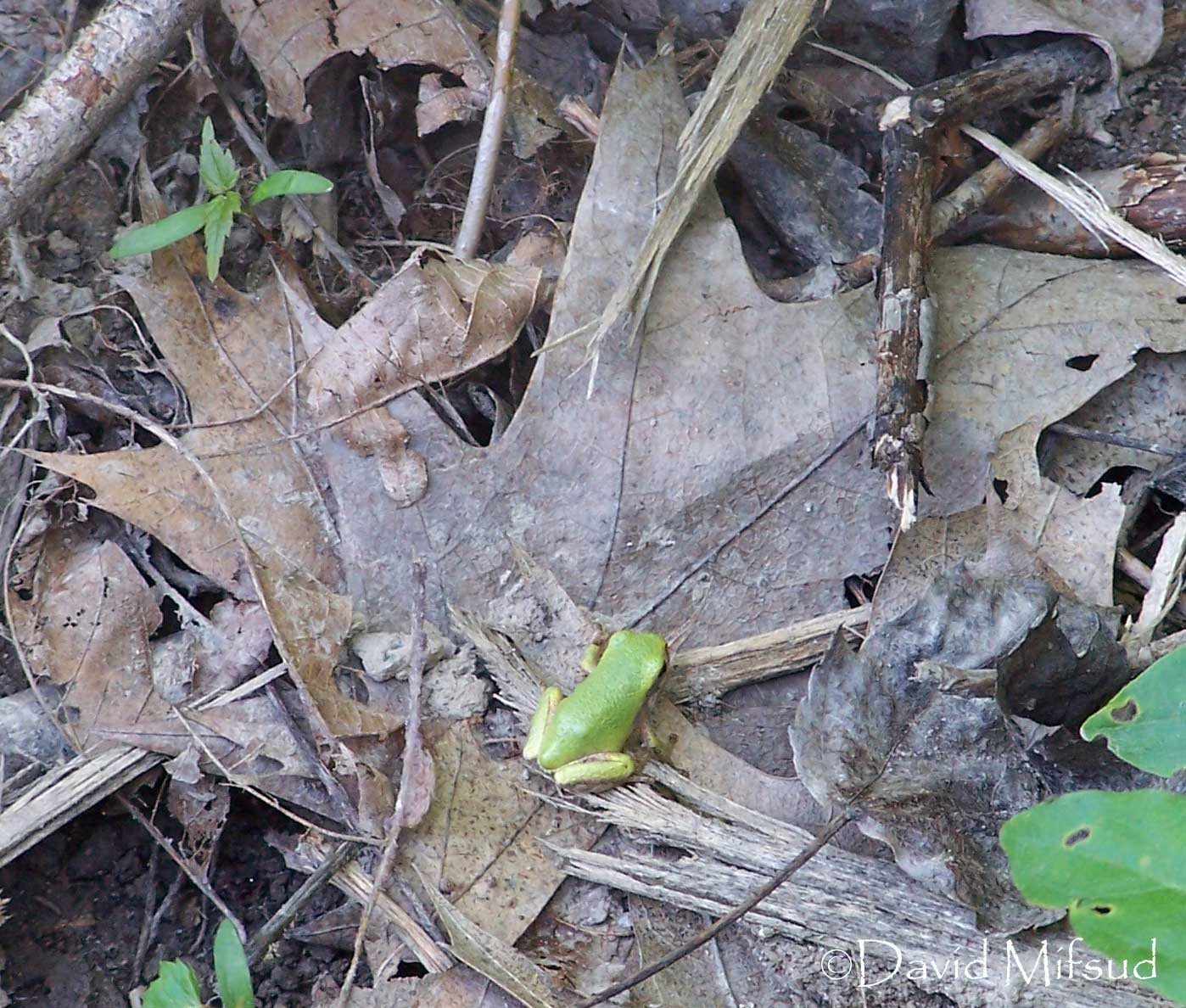
Hyla versicolor or Hyla chrysoscelis
Identifying Features
- 1.5 to 2 inches long; has large, sticky toe pads.
- Ability to change color from grey to green to brown; amount of time needed to change color is influenced by temperature and humidity.
- Common throughout most of our area.
- Deciduous forests, farm wood lots, swamps: almost anywhere that suitable breeding ponds are adjacent to trees or shrubs. Herbicide and pesticide applications to trees and shrubs near wetlands can be harmful.
- Mucus produced on toe pads enhances surface tension and allows frogs to climb smooth surfaces.
- In winter they hibernate on land, under logs, leaf litter, and in hollow trees. Can tolerate sub-freezing temperatures by producing large amounts of glycerol in blood and body tissues, which prevents ice from forming in the body cells.
Call
- Low, melodic trill, similar to the call of a red-bellied woodpecker.
Breeding
- Temporary ponds, swamps, flooding and shallow edges of permanent lakes are used for breeding.
- May emerge from dormancy early in spring, although rarely call until late April or early May. Breeding extends into late June or early July.
- “Satellite males” often take over prime calling sites when another male leaves the site.
- Females deposit 1000-2000 eggs, divided into loose clusters of 10-40 eggs, which are usually attached to plants or other objects near the water’s surface.
Development
- Eggs hatch in 3-7 days depending on water temperature.
- Tadpoles transform into frogs in 6-8 weeks.
- Sexual maturity is reached after their second winter.
Habitat Type
- Ephemeral wetlands.
- Permanent wetlands.
- Forests.
